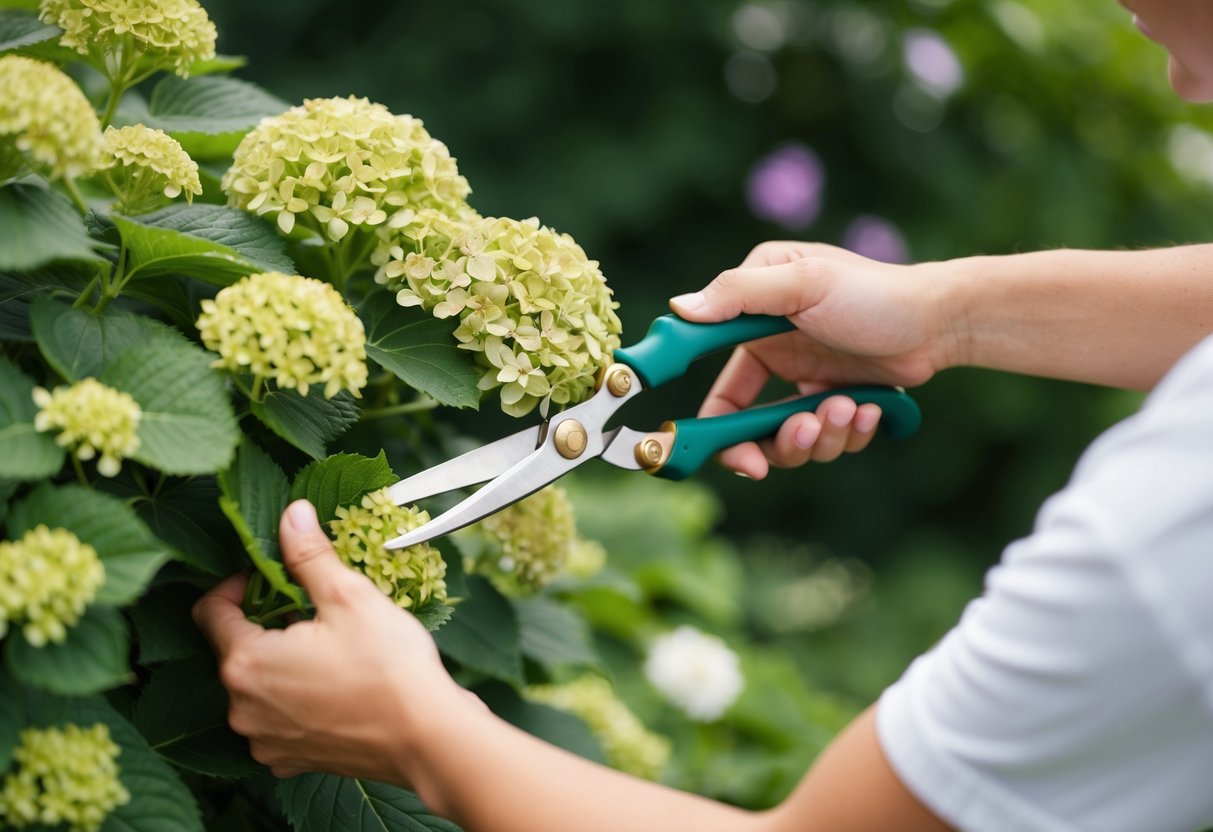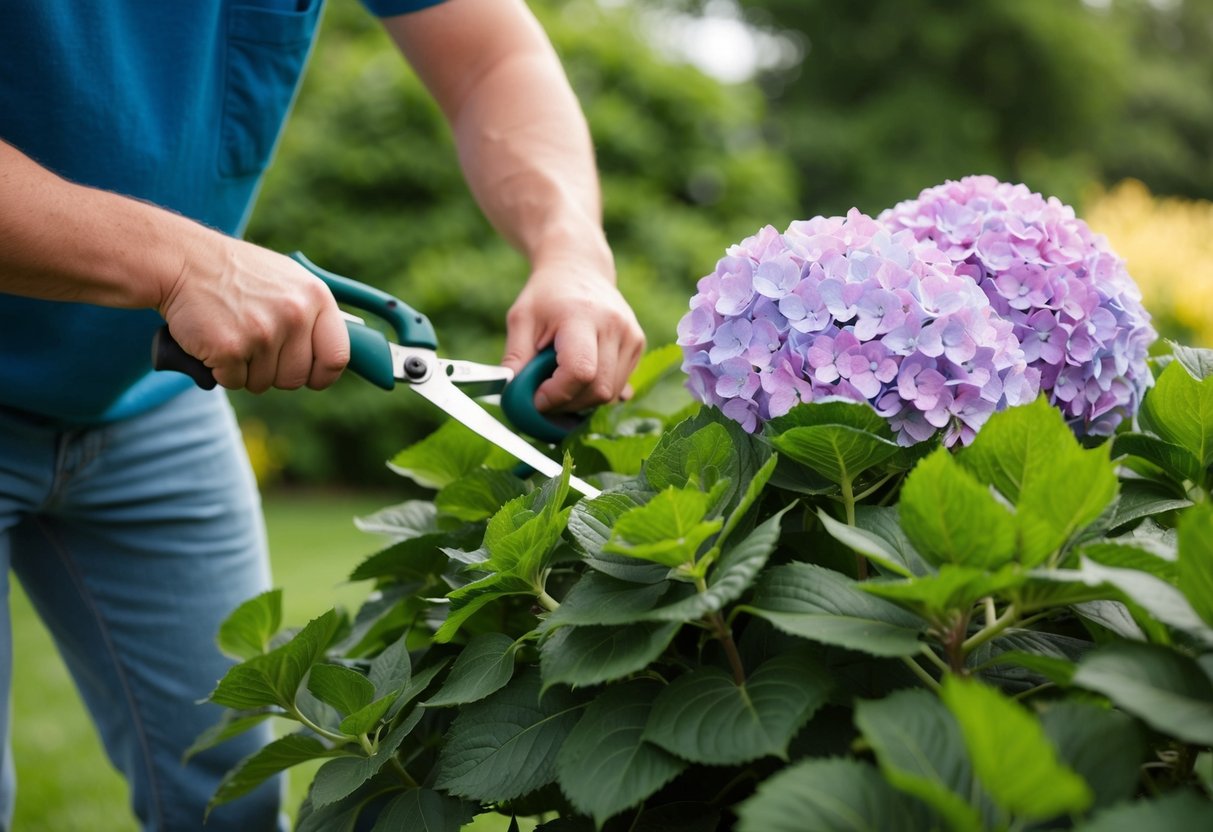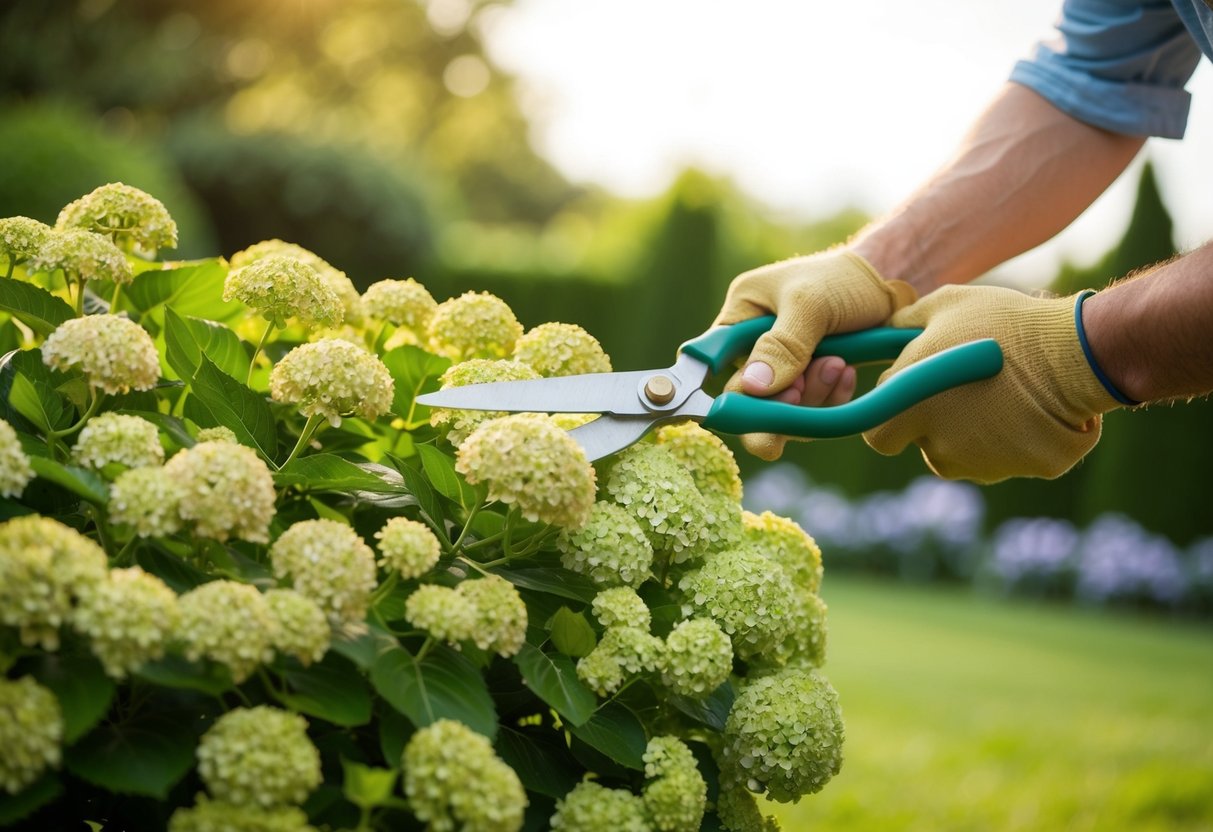How to Make Hydrangea Bushier: Simple Tips for a Fuller Bloom
If you want lush and full hydrangeas in your garden, learning a few simple tips can transform those spindly shrubs into robust, blooming beauties. To make your hydrangea bushier, focus on proper pruning and sufficient sunlight.
Pruning away leggy stems not only encourages new growth but also helps your plants develop a stronger structure, leading to more vibrant blooms.

Additionally, making sure your hydrangeas get enough sunlight is key. A mix of morning sun with afternoon shade can support healthy growth and fuller plants. If you’re not seeing the results you want, adjusting the amount of sunlight could make a noticeable difference.
Consider the specific type of hydrangea you have since each variety might have different needs.
For example, some hydrangeas bloom on new wood while others bloom on old wood, affecting how and when you should prune them. Understanding these little quirks will help you better care for your hydrangeas and keep your garden looking lush and vibrant.
Understanding Hydrangeas

When it comes to hydrangeas, knowing the different types and their growth patterns can help you care for them better. Key factors like the way these plants grow and how they respond to pruning can make your hydrangeas thrive.
Types of Hydrangeas
Hydrangeas are popular garden plants with several species, each having its own charm. Hydrangea macrophylla, also known as bigleaf hydrangea, is famous for its colorful blooms.
Hydrangea paniculata, or panicle hydrangea, produces large cone-shaped flowers.
Hydrangea arborescens, or smooth hydrangea, is known for its adaptability and resilience.
You also have the beautiful Hydrangea quercifolia, or oakleaf hydrangea, which stands out with its oak-shaped leaves. The lacecap flowers of Hydrangea serrata add delicate touches to gardens.
These various types of hydrangeas offer diverse textures, colors, and shapes, which can complement any landscape. Knowing the unique qualities of each type helps you select the best one for your garden.
Hydrangea Growth Patterns
Understanding how hydrangeas grow is key to maintaining their bushy appearance. Most of these plants are deciduous shrubs, meaning they shed leaves seasonally.
Hydrangea macrophylla and serrata form buds on old wood, which impacts pruning timing. For these, pruning right after flowering encourages next season’s growth.
On the other hand, Hydrangea paniculata and arborescens form flowers on new wood, allowing you to prune them during late winter or early spring. This practice fosters robust blooms as new growth emerges.
Your knowledge of their growth patterns can help you maintain healthy and aesthetically pleasing hydrangeas throughout the seasons.
Proper Planting Techniques

To help your hydrangeas become bushier, focus on where and how they’re planted. Choosing the best spot and preparing the soil properly are crucial steps. These will ensure your hydrangeas thrive and grow lush and full.
Choosing the Right Location
When selecting a location for your hydrangeas, consider both light and space. Some types like hydrangea macrophylla need partial sun. Ensure your garden has enough sunlight during the day, especially morning sun combined with afternoon shade.
Air circulation is important. Good airflow around the plants will reduce the risk of disease. Avoid crowded areas where air can’t move freely. This helps the leaves stay dry and healthy, preventing fungal problems.
Choose a space that allows your hydrangeas to spread out as they mature. Bushy growth requires room, so leave enough space between plants. Lacecap hydrangeas, for instance, may take up slightly less room but still need plenty of space to avoid overlapping with nearby plants.
Soil Preparation and Planting
Start with rich, well-draining soil. Hydrangeas like soil that retains some moisture but doesn’t get soggy. Amending the soil with organic matter like compost can be a great way to keep it nutrient-rich.
Dig a hole that is as deep as the root ball and two to three times as wide. Place the hydrangea in the hole so that the base of the plant is level with the surrounding ground. Water thoroughly after placing the plant to eliminate air pockets and ensure good root contact with the soil.
Adding a thick layer of mulch helps. It keeps the soil moist and prevents weed growth, benefiting overall plant health.
Pruning for a Bushier Hydrangea

Pruning hydrangeas can help boost their growth, making them fuller and bushier. To achieve this, you’ll need to understand the best times to prune, the right techniques, and how to deal with different hydrangea types.
Best Time to Prune
Timing is key when it comes to pruning hydrangeas. The best time to prune depends on whether your hydrangeas bloom on old wood or new wood.
For those blooming on old wood, like bigleaf hydrangeas, prune after flowering in late summer. This helps remove dead stems and allows you to shape the plant without affecting next year’s flower buds.
Hydrangeas that bloom on new wood, such as smooth hydrangeas, can be pruned in late winter or early spring. This encourages fresh growth and robust flowering. Choosing the right time ensures maximum blooms and healthy growth for your hydrangeas.
Pruning Techniques
To make your hydrangeas bushier, focus on cutting back long, spindly stems. Use sharp pruning shears to ensure clean cuts.
Start by removing any dead stems, which are often brown and shriveled. Trim these down to the next set of healthy buds.
Next, cut back crossing stems to improve air circulation and encourage even growth. This helps your hydrangeas develop a well-balanced shape.
To further promote bushiness, consider an annual pruning that involves trimming the plant’s outer branches to stimulate inward growth. Being careful and precise with your pruning can lead to a fuller and healthier hydrangea.
Pruning Different Hydrangea Types
Different hydrangea types require different approaches.
Bigleaf, mountain, and oakleaf hydrangeas bloom on old wood, so they should be pruned in late summer. For these, it’s vital to avoid cutting into old growth too harshly, preserving next season’s flower buds.
On the other hand, panicle and smooth hydrangeas bloom on new wood, making late winter or early spring an ideal time for pruning. Focus on removing dead or weak branches, as well as shaping the plant to encourage bushy growth. Understanding these differences helps ensure that each hydrangea type gets the care it needs to thrive.
Encouraging Healthy Blooms

To get the best blooms from your hydrangeas, focus first on watering and feeding them right. Light conditions also play a crucial role. Make sure your plants receive what they need without getting too much of a good thing. By managing these aspects, you’ll encourage vibrant and healthy flowers.
Optimal Watering and Fertilizing
Hydrangeas need the right balance of water. They thrive on deep watering sessions rather than frequent light sprinklings. Aim for watering them deeply 1-3 times per week. This approach ensures that the roots stay moist without becoming waterlogged.
Fertilizing is also key for healthy blooms. Use a well-balanced fertilizer to nourish your hydrangeas.
Spring is the ideal time to fertilize. For different hydrangea types, a specific plan might be needed, as in the case of bigleaf hydrangeas. Here, acidic soil can influence the color of the blooms, giving you those pretty pink or blue flowers.
Managing Sunlight and Shade
Sunlight is another important factor. Most hydrangeas, like hydrangea macrophylla, prefer morning sun and afternoon shade. This is crucial for preventing leaf scorch and keeping the blooms vibrant throughout the season.
Some types, like hydrangea paniculata or limelight, can handle more sun. Placing them in areas with adequate sunlight helps enhance bloom quality. Monitor your plants and adjust their placement if necessary. Providing the right combination of sun and shade ensures your hydrangeas can produce lots of gorgeous flowers.
General Care and Maintenance

Caring for your hydrangea involves protecting it from pests and diseases while following seasonal routines. By focusing on these areas, you can promote a healthy and bushier growth for your shrubs.
Protecting Against Pests and Diseases
Hydrangeas can attract pests like aphids and spider mites. To keep these away, regularly inspect the leaves and stems. If you notice insects, gently wash them off with a hose or apply insecticidal soap.
Diseases such as powdery mildew might affect your hydrangeas. To prevent this, make sure your plants have good air circulation. Pruning overcrowded growth can help keep your hydrangeas healthy and bushier.
Additionally, regularly check for any signs of disease on leaves and remove affected areas quickly. This helps to prevent the spread of infections. Regular care in this aspect will ensure your hydrangea remains a vibrant part of your garden, requiring low maintenance over time.
Seasonal Maintenance Routines
Caring for your hydrangea changes with the seasons. In spring, focus on pruning dead or leggy hydrangea branches. This encourages new growth. For smooth hydrangea and panicle hydrangeas, pruning in late winter can also be beneficial.
During the summer, make sure your hydrangeas receive enough water, but avoid soggy soil.
Adding a layer of mulch helps retain moisture and prevent weeds.
In fall, cut back on watering, as the plant prepares to go dormant. Also, apply a balanced fertilizer to strengthen your shrub before winter arrives.
In colder months, consider protecting the roots with an extra layer of mulch or covering.







